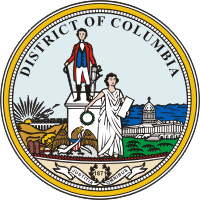DC-Net has built a successful mid-mile network to serve the District of Columbia‘s government and anchor institutions such as schools, hospitals, and libraries. Now they are holding hearings to determine whether to expand the scope of DC-Net to federal government agencies and local service providers and possibly build infrastructure directly to homes and businesses. This latter endeavor could possibly put taxpayers “on the hook” for hundreds of millions of dollars.
The hearing held by DC Council-member Mary Cheh lasted over 3 hours with many speakers testifying to the benefits and success of DC-Net. Apparently the session was an information gathering meeting for Ms. Chey because there was very little concrete information conveyed as to whether or how the District should increase access to third-parties outside of government and anchor institutions or build a last-mile network.
Apparently DC-Net has the fiber to create two separate networks: one for government business and another for private access. This existing infrastructure is a perfect starting point if an appropriate business case can be made to “open up” the network and partner with various service providers through a public/private partnership. DC-Net is another municipal success story, but they need to carefully plan out the evolution of the network in stages. The OCTO should begin talking to potential service provider partners and companies with experience in building last-mile networks to understand the methods and costs of a last-mile extension. They should survey the community and businesses to determine interest in purchasing services from these new service providers. Only then will they have a good understanding of what type of network and how to build it out. Without community buy-in and an understand of the community’s needs, any potential expenditures will be an exercise in futility.
The article below was written by Preston Rhea who testified on the use of WiFi mesh networks to deliver broadband Internet access. WiFi and other wireless technologies could be an alternative to provide broadband access if the community does not want video services. A good needs assessment will help determine the needs of the community and the most cost-effective way of providing them.
Yesterday I attended the Public Oversight Roundtable for the Washington, DC Committee on Government Operations and The Environment (public notice here). DC Council-member Mary Cheh, who is responsible for the public oversight of the Office of the Chief Technology Officer (OCTO), chaired the roundtable. Video of the round-table can be found here; my testimony is from the 1:30:00 minute followed by questions from Chairwoman Cheh. (The video requires Microsoft codecs; if you do not use Explorer, I recommend streaming the link through VLC Player.)
The round-table offered a forum for public testimony regarding DC-Net, a municipal fiber network administered by OCTO. Last year, DC-Net was authorized to provide services to, among other entities, “providers who wish to contract with DC-Net to provide services to D.C. Public Schools, District public charter schools, District Public Libraries, or open-access public networks which can provide internet services to under-served District populations and neighborhoods.” The people’s taxes were once again authorized to form a possible contractual give-away to ISPs with no interest in digital justice. To help inform the Councilwoman on how to achieve DC’s broadband adoption goals without pouring tax dollars into Verizon’s coffers, the Open Technology Initiative provided documents on open mesh network topology and a policy study titled “Rise of the Intranet Era.” Today I added to the public record on the meeting a freshly released policy paper from OTI and the Media Policy Initiative, “From the Digital Divide to Digital Excellence.”
Two speaker panels of four speakers each provided testimony at the round-table, including a representative from Cisco, an adviser on public sector telecommunications, a DC Advisory Neighborhood Commissioner speaking on behalf of his neighborhood, and a representative of the University of the District of Columbia. Whether they offered supportive ways forward for DC-Net to expand to residences or expressed dismay at the prospect of DC-Net offering no solid alternative to incumbent ISPs, one thing united the testimony of each of the eight scheduled speakers: all of them focused on wireline solutions to broadband adoption. None of them offered consideration of wireless broadband as a way to fill in the gaps of adoption, and they all spoke of residents and institutions as parties to a contract with ISPs. The amount of money discussed to fulfill DC-Net’s purpose was in the tens and hundreds of millions of dollars.
Article Continued on New America Foundation…






